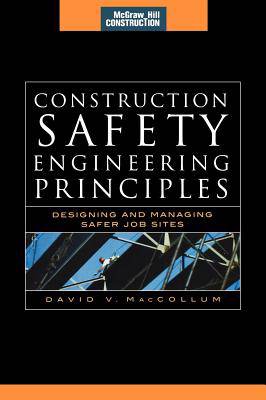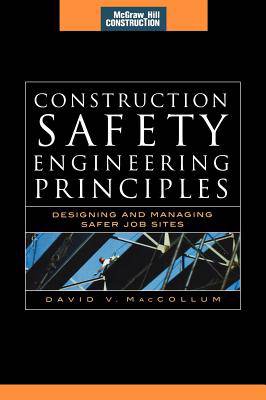
- Retrait gratuit dans votre magasin Club
- 7.000.000 titres dans notre catalogue
- Payer en toute sécurité
- Toujours un magasin près de chez vous
- Retrait gratuit dans votre magasin Club
- 7.000.000 titres dans notre catalogue
- Payer en toute sécurité
- Toujours un magasin près de chez vous
Construction Safety Engineering Principles (McGraw-Hill Construction Series)
Designing and Managing Safer Job Sites
David MacCollumDescription
Identify and Control Safety Hazards on Construction Sitesto Reduce Worker Injuries and Increase Productivity
Construction Safety Engineering Principles: Designing & Managing Safer Job Sites equips architects, engineers, and construction managers with a step-by-step methodology for identifying and controlling hazards before construction starts. The book explains how to look beyond the utility of machinery and equipment to how they will actually be used on a construction site_and thereby spot potential hazards in advance.
Safety expert David MacCollum presents examples of the 50 most common construction hazards, showing how they can be eliminated by means of proven design techniques and technologies. He explains how to prevent falls from elevations with safe access systems, get rid of blind zones behind mobile equipment, utilize control systems that cannot be unintentionally activated, avoid crane accidents, and much more. Packed with detailed illustrations, Construction Safety Engineering Principles enables construction professionals to:
- Design and plan safer construction sites for residential, commercial, and industrial projects
- Correct safety problems before construction begins
- Dramatically reduce costly worker injuries and job delays
- Increase productivity and create a more cost-effective project
Improve Safety Conditions on Any Construction Site!
-Hazard Definition (Dormant, Armed, or Active) - Hazard Prevention through Design Features and Safety Appliances - Hazard Categories (Natural, Structural/Mechanical, Electrical, Chemical, Radiant Energy, Biological, Automated) - Safe Design Hierarchy - Hazard Identification and Prevention Matrix - Crane Hazards - Other Equipment Hazards - Universal Hazards - Access Hazards - Types of Construction - Operation and Maintenance - Planning - Including Safety in the Design - Including Safety in the Master Construction Plan - Economics of Safer DesignSpécifications
Parties prenantes
- Auteur(s) :
- Editeur:
Contenu
- Nombre de pages :
- 416
- Langue:
- Anglais
- Collection :
Caractéristiques
- EAN:
- 9780071482448
- Date de parution :
- 08-01-07
- Format:
- Livre relié
- Format numérique:
- Ongenaaid / garenloos gebonden
- Dimensions :
- 233 mm x 193 mm
- Poids :
- 870 g







